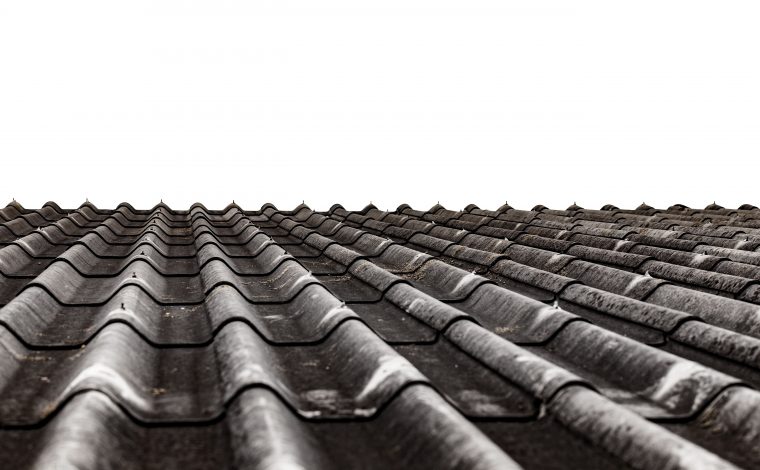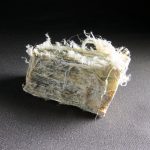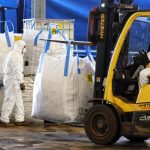PART II – ASBESTOS IN THE HOME
Part II of this guideline provides information for householders and tradespersons working on homes about where asbestos could be in the home and how to prevent exposure to asbestos fibres.
Currently, Colombian laws prevent homeowners or occupiers from removing or demolishing asbestos structures from the home – these activities must be undertaken by a professional.
Exposure to asbestos fibres during home repairs, renovation and demolition are an increasing lung disease risk in Colombia .
When planning home renovations, maintenance or repair, it is important to know:
1. Where asbestos may be in the home
2. Whether it is friable or non-friable
3. What condition it is in
4. What steps to take to prevent releasing asbestos fibres into the air
2.1 WHERE IS ASBESTOS FOUND IN THE HOME?
If a home was built after 1942 and before 1 January 2021 then asbestos products are probably present.
Outside the home
- roof sheeting and capping
- gutters, gables and eaves/soffits
- water pipes and flues
- cladding for walls
- fencing
Inside the home
- wall sheeting, particularly in wet areas such as the kitchen, bathroom, toilet and laundry
- ceiling sheeting
- plaster patching compounds and textured paint
- electrical switchboards
- vinyl floor tiles and felt backing for vinyl and linoleum flooring
- insulation in domestic heaters and stoves.
How can you tell if something is asbestos?
You cannot tell if a material contains asbestos just by looking it. Only scientific testing of a sample by a laboratory can confirm this.
Always check if asbestos is present before starting any repairs, maintenance or home improvements by asking an asbestos professional for advice and have a sample of the material tested.
Otherwise, if you are not sure that a material contains asbestos, you should assume that it does and take the necessary precautions.
2.2 WHEN IS ASBESTOS HARMFUL?
As described in Part I of this guideline asbestos can be in a friable or non-friable form in products.
Friable asbestos is flaky, powdery and can be broken up using just your fingers. It is extremely hazardous because the fine asbestos fibres can be easily released into the air and inhaled.
Non-friable asbestos is bonded securely as part of another compound, often cement. Non-friable asbestos is not dangerous unless the material is disturbed, damaged or has deteriorated over time.
Where is the friable asbestos in homes?
Products in homes considered friable include:
- asbestos cloth wrapping around pipes
- sprayed-on lagging
- woven asbestos tape on electrical plugs and fuses
- loose asbestos fibre insulation
- cracked or damaged fiberboard containing asbestos.
- asbestos-contaminated dust from disturbing either friable or non-friable products
- old and deteriorated non-friable asbestos cement products
Where is the non-friable asbestos in homes?
Most asbestos-containing products used in homes are non-friable or bonded asbestos cement materials. They include:
- Corrugated roof tiles
- Gutters
- Eaves
- Water pipes
- Water tanks
- Exterior and interior wall cladding
- Old vinyl and linoleum floor coverings and tiles
How can asbestos be disturbed or damaged?
Asbestos products that are broken up, damaged or in poor condition are more likely to release fibres that can be inhaled. Examples of this occurring are when holes are drilled into asbestos sheets, asbestos roofs are cleaned with high pressure water or when external asbestos materials erode over time due to weathering.
Other activities that can damage or disturb asbestos are:
• Demolition • Floods, bushfires
• Refurbishment or renovation work • Earthquakes, volcano eruption
• House Fire • Building collapse
2.3 WHAT CAN BE DONE TO STAY SAFE?
If non-friable asbestos material is in good condition do not disturb or damage it.
If it is broken, weathered or if any renovation work is likely to disturb or damage the asbestos, seek professional help to remove it.
Any friable asbestos should always be professionally removed without delay.
Colombian laws require that all removals and disposals of asbestos structures are only done by professional removalists.
If asbestos products are in reasonably good condition, then there are 3 options that can be undertaken to protect the asbestos from damage or deterioration until a professional can remove the asbestos product:
1. Enclosure – building a solid containment around the asbestos
2. Encapsulation – applying a compound that binds asbestos into the compound
3. Sealing or coating – applying a protective coating that provides a barrier to hold asbestos fibres in place
Further information on each of these options is in section 3.5 of this guideline.
Asbestos and maintenance tasks
When carrying out minor repairs or maintenance on your home, always take care to avoid disturbing or releasing asbestos fibres. Never use high-pressure water or any abrasive process (e.g. scrubbing, sanding or grinding) to clean asbestos cement roofs or any other asbestos material. This can result in widespread contamination.
If you need to cut a small hole into an asbestos-cement sheet, for example to install a cable, only use a hand saw or hand drill (or low-speed battery drill) and contain or capture any asbestos dust. You should also wear suitable personal protective equipment.
Further information on the safety precautions that should be taken when working with asbestos are in Part IV and Part VI of this guideline.
Even common tasks, such as cleaning water tanks or cleaning mould off roof shingles may release asbestos fibers. Always use work practices that will prevent or minimise the release of asbestos fibres into the air.
- Do not use brooms or brushes to dry-sweep asbestos containing dust
- Do not use high-speed power tools to cut, grind, sand or drill asbestos materials
- Do not use high pressure water or compressed air to clean asbestos materials










